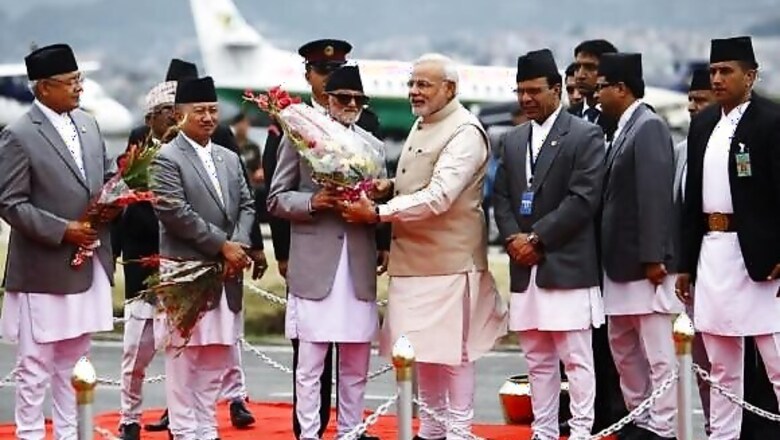
views
Kathmandu: Prime Minister Narendra Modi embarked on a visit to Nepal on Sunday to help speed up negotiations on a power trade pact that is at the centre of a new effort to improve ties with a neighbour that serves as a buffer with China.
Since becoming prime minister in May, Modi has sought to shore up support among smaller countries in the region that have in recent years turned to China for quick implementation of energy and transport projects.
His will be the first bilateral visit to Nepal by an Indian prime minister in 17 years, though Indian leaders have routinely attended regional summits in Kathmandu.
Negotiators were trying to narrow down differences over the power pact aimed at harnessing Nepal's estimated 42,000 MW hydro-electric potential to meet domestic needs and also supply India's giant energy-starved economy.
The Himalayan nation currently has an installed capacity of 600 MW as its development has been held back by years of political instability. It is still struggling with the transition to a constitutional republic after the abolition of the monarchy in 2008.
Nepal's politicians are at odds over the proposed energy pact. Opponents say it would give Indian firms a stranglehold over Nepal's energy resources and bar other countries, like China, from investment in the sector.
Ahead of Modi's visit, Nepal's government urged political groups to put aside their differences, saying it was a chance to rebuild the aid-dependent economy and revitalise ties with India.
"Modi is result-oriented and gives priority to economic prosperity. He wants to consolidate ties with Nepal," Foreign Minister Mahendra Bahadur Pandey said.
During the two-day trip, Modi plans to meet politicians across the spectrum, including Maoists who accuse India of meddling in Nepal's internal affairs.
In a statement made before his departure, Modi promised greater political engagement with Nepal.
"We will identify steps to strengthen our bilateral cooperation in key sectors, including trade and investment, hydro power, agriculture and agro-processing, environment," he said.
In June, Modi chose Bhutan for his first foreign trip, vowing to ramp up economic ties with the tiny country, which like Nepal shares a border with China.
There, Indian investment has faced less political resistance and the two countries are targeting to produce 10,000 MW of power by 2020, most of which will be exported to India.


















Comments
0 comment